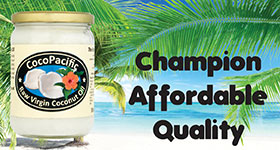|
|
Probiotics – the 'friendly' bacteria: side-lined healers – John Scott reviews the current research. |
Of the 100 trillion ‘friendly’ bacteria, from hundreds of different species, that we each carry around in our gut, only a few may have a special role in shaping our immune responses, but one of this select group involved in immune regulation may have been found recently, in the form of a little-known bacterial species called segmented filamentous bacterium. This ‘master’ bacterium is the first example to be found of a commensal bacterium that can simultaneously orchestrate a large spectrum of intestinal immune responses – both innate and adaptive, pro-inflammatory and regulatory – to create an immune barrier in the gut. It can single-handedly initiate immune cell responses in mice that normally require the concerted efforts of the entire mouse microbiota and, by so doing, effectively protect mice from illness caused by an intestinal pathogen. There is also now further evidence of the ability of ‘friendly’ gut bacteria to not only help fight infection, but also do so while maintaining a fine balance between over- and under-stimulating the immune system. Research is also ongoing into the development of modified probiotics that can divert gut pathogens away from vulnerable intestinal cells. By adding to harmless gut bacteria molecular mimics of the sugar receptors displayed on the walls of intestinal cells, the researchers have succeeded in duping the infamous E. coli O157 pathogen into attaching to the bacteria rather than the cells, to provide 100% protection against this otherwise fatal disease. Recent evidence to support the therapeutic use of simpler, unmodified probiotics includes Dutch research which found that treating pregnant mothers, and then their infants, with particular strains of probiotics may help prevent eczema in children with a family history of allergies. Research conducted in China has also recently found that probiotic dietary supplementation during the winter months was a safe and effective prophylaxis against colds and influenza in children, reducing fever, rhinorrhoea, and cough incidence, as well as the need for antibiotics and the number of missed school days attributable to illness. When children in the study who were taking probiotics did get fevers, coughs or runny noses, they recovered significantly faster than untreated peers. While the Lactobacillus acidophilus and Bifidobacterium animalis strains used in this latter study were both independently effective, the best results were obtained when the two types of bacterium were combined, hinting at the possibility that the use of multiple species of organism may be preferable in the case of bacterial therapy, as it appears to be in helminthic therapy. All this recent work adds to a substantial body of existing evidence for the therapeutic effects of probiotics, just some of which is mentioned below. Probiotics can help fight the stomach bug Helocobacter pylori, benefit the sickest young children on antibiotics, ease antibiotic diarrhoea, and may help reduce salmonella infection. Probiotics have been shown to be active against inflammation in models of arthritis and salmonella infection, ease colic in breastfed babies, normalise bowel frequency in IBS patients, improve health in patients with Chronic Fatigue Syndrome, help reduce obesity, ease ulcerative colitis and promote oral health. Ultimately, it may be the case that many of the ills to which our own species falls prey could be amenable to the ministrations of commensal bacteria, and with less side effects than are associated with the isolated synthetic molecules which are the mainstay of medicine today. Yet, however attractive this idea may be to those who are ill, and however encouraging the results above, the reality is that the latter constitute only a trickle when compared with the veritable torrent of research being conducted into patentable synthetic pharmaceuticals. Currently, medicine appears to be rather less interested in pursuing probiotic research than is the food industry, for whom functional foods – including dairy products containing probiotics – are their fastest-growing product group. Unfortunately, the dominance of the profit motive in medical research leaves little appetite for exploration of the lost world within us, so, at the present rate of progress, it could be many decades before we understand our own microbiome sufficiently to fully capitalize on the therapeutic potential of the organisms within it. An approach which obviates the need to identify individual beneficial bacterial species is faecal bacteriotherapy, which employs the most complete mix of human-derived probiotic bacteria possible – the entire faecal flora of a healthy human being. Already shown to be successful against ulcerative colitis, this treatment should arguably be subject to further formal trials for this and other diseases. This approach has been around for a number of years, but has failed to capture the attention of clinicians, perhaps due to the nature of the protocol (detailed here) which some may find repugnant. This is a great pity because the therapy is low-tech, low-cost, minimally invasive, and offers perhaps the ultimate bacterial probiotic. Whilst we are forced to rely on manufacturers to provide us with probiotics in supplement form – which usually contain only a very limited number of bacterial species, and are invariably expensive – the all-in-one probiotic delivered by faecal bacteriotherapy is available free, and acquiring it is within the capability of any moderately adventurous and resourceful individual. Given a willing, healthy donor and some basic equipment, this procedure is ripe for self-administration, using the rectal delivery route. Anyone who can perform colonic irrigation, should be able to manage this. This option is therefore something which those with ulcerative colitis may wish to consider, although helminthic therapy using whipworms remains the first choice for this condition, as there is already much preliminary scientific evidence supporting its use. It is also convenient and has produced good results in those who have tried it thus far.
Click here for more articles Click here for LINKS to manufacturers of nutrition and food supplements. First Published in Febuary 2010 Back to top |










